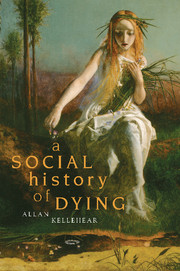Book contents
- Frontmatter
- Contents
- Acknowledgements
- Introduction
- Part I THE STONE AGE
- Chapter One The Dawn of Mortal Awareness
- Chapter Two Otherworld Journeys: Death as Dying
- Chapter Three The First Challenge: Anticipating Death
- Part II THE PASTORAL AGE
- Part III THE AGE OF THE CITY
- Part IV THE COSMOPOLITAN AGE
- Conclusion
- Bibliography
- Index
Chapter Two - Otherworld Journeys: Death as Dying
Published online by Cambridge University Press: 22 September 2009
- Frontmatter
- Contents
- Acknowledgements
- Introduction
- Part I THE STONE AGE
- Chapter One The Dawn of Mortal Awareness
- Chapter Two Otherworld Journeys: Death as Dying
- Chapter Three The First Challenge: Anticipating Death
- Part II THE PASTORAL AGE
- Part III THE AGE OF THE CITY
- Part IV THE COSMOPOLITAN AGE
- Conclusion
- Bibliography
- Index
Summary
After a review of the archaeological evidence about the life and death worlds of our Stone Age ancestors, and accepting the uncertainty of the theory and evidence about those times, what can we say about how people died during that period?
Obviously people were always aware of death as an inherent part of their biological and social equipment. This is equipment that we share with most animals, perhaps all animals. But beyond that mortal awareness, and as part of our growing human self-consciousness, we gradually became aware of the actual prospect of personal death. In other words, in the face of great biological, interpersonal or interspecies threat we were probably always aware of those series of moments or minutes of our own dying. As we bled to death in giving birth, or encountered great injury during a hunting accident, or during a murderous piece of treachery against ourselves, we knew in those moments that our death was very near. Our death was but minutes, perhaps seconds away. In the Stone Age, personal awareness of dying must have often been short and sudden.
The most interesting aspect of Stone Age dying, from a modern point of view, is that it is only in the space of this awareness that the individual seems able to think, feel or do anything before his or her own death because in just about every other aspect of dying it is other people rather than the self that dominate the subsequent social production of dying.
- Type
- Chapter
- Information
- A Social History of Dying , pp. 28 - 46Publisher: Cambridge University PressPrint publication year: 2007



